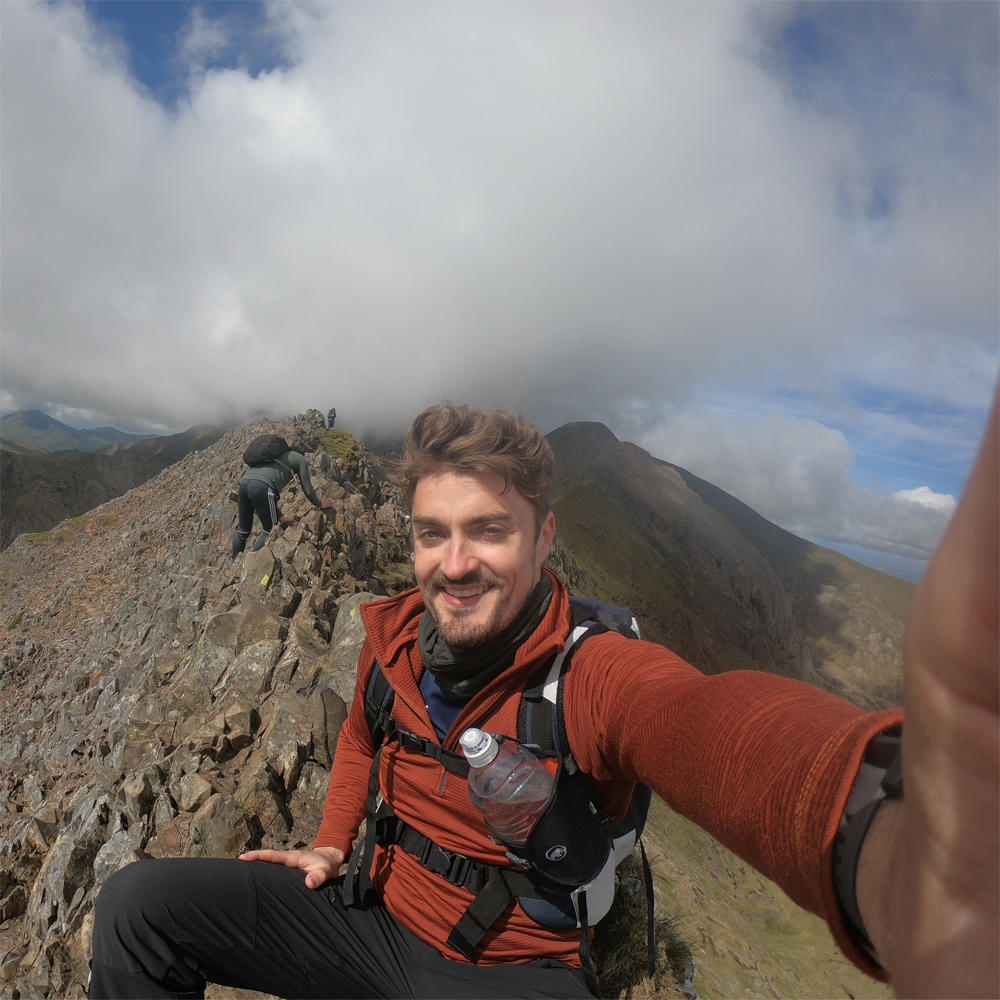Advnture Verdict
Ideal for three-season camping trips close to the car, the Quechua MH100 Fresh&Black is a bulky and heavy yet durable tent that comes with some interesting features you’ll either love or hate.
Pros
- +
Affordable
- +
Easy to put up and pack away
- +
Maintains cool inside temperature in summer
Cons
- -
Inner-first pitch is not good in the rain
- -
Heavy and large pack size
- -
Fresh&Black fly makes it very dark inside
- -
No usable vestibule
You can trust Advnture
Quechua MH100 Fresh&Black: first impressions
The Quechua MH100 Fresh&Black may not trouble any best camping tents buying guides, but if you’re camping on a budget because of the cost-of-living squeeze, it’s worth considering. Quechua is Decathlon’s in-house budget brand that makes kit for various types of sports. I’ve used numerous pieces of their gear over the years and have always been pleasantly surprised by the quality – especially considering the price. And their MH100 Fresh&Black is no different.
• List price: £64.99 / $119
• Style: Freestanding dome
• Weight: 4.1 kg / 9.02 lb
• Waterproofing: 2,000mm fly | 2,400mm floor
• Rooms: One bedroom
• Pack size: 60cm x 20cm x 18 cm / 21in x 8in x 7 in | 17L
• Compatibility: Comes in two or three-person models. The three-person will comfortably sleep two as long as neither is over six foot tall.
It’s a durable shelter that feels robust and reliable. It comes with an ample number of pegs and setup is incredibly simple; so much so that I was able to quickly put it up at night in the pouring rain without making a single mistake on my first try.
Once up, the tent itself is a proper cavern. There is tons of space in the Quechua MH100, and the height of the dome means you can easily sit up and move around. What’s more, the stuff sack it comes in is very easy to use and squashes the tent down into a neat package – even when you hurriedly pack it away in the rain.
Coming in at just over 4kg for the three-person version, this tent is by no means lightweight. But as two people can quite comfortably sleep in the Quechua Mh100 Fresh&Black, you can easily share the burden by splitting the load between two packs.
Quechua MH100 Fresh&Black: in the field
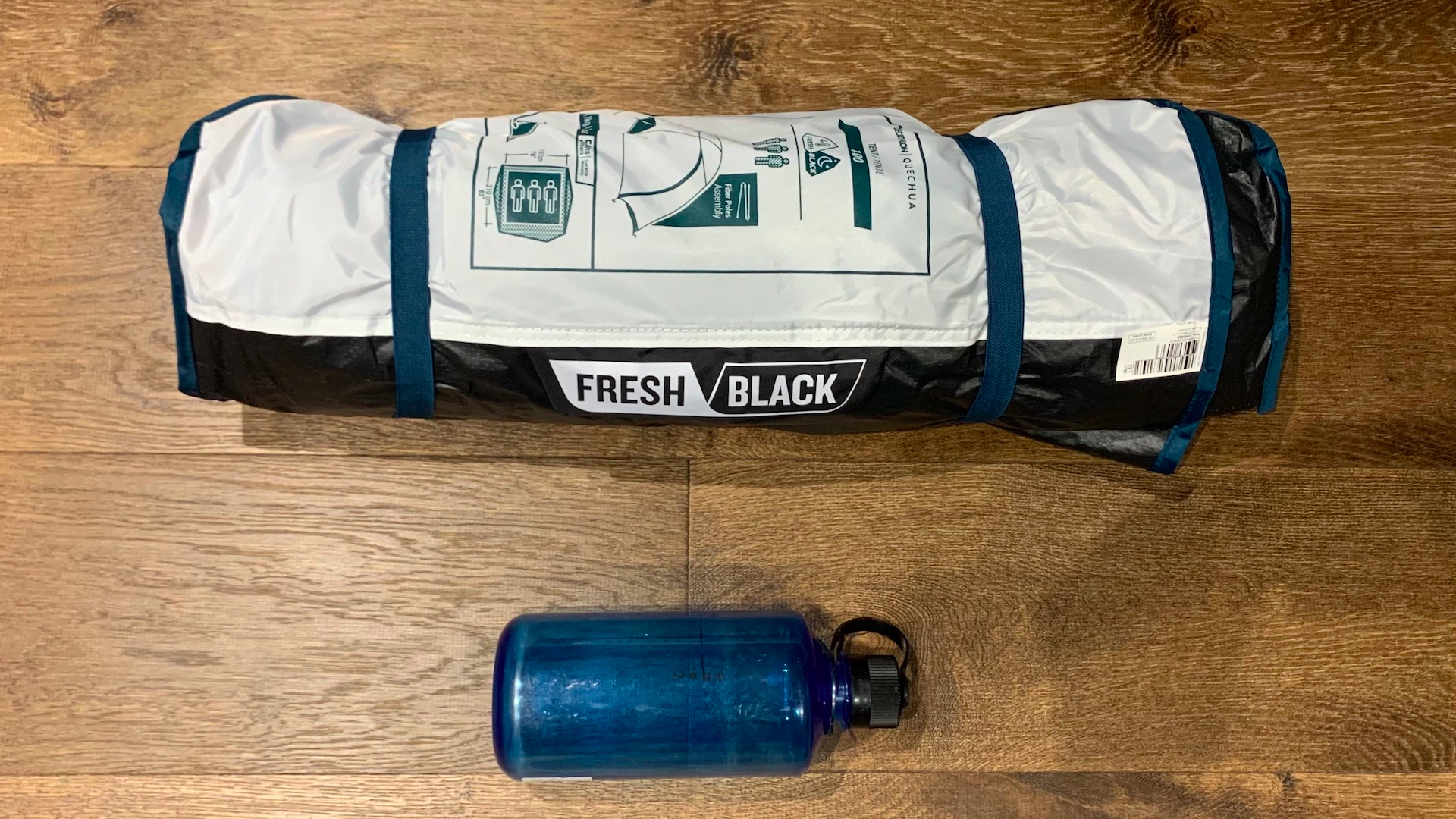
To date, I’ve used the Quechua MH100 Fresh&Black on two different trips: one was a week-long thru-hike in Germany’s Black Forest, where I used an earlier model of the three-man version; and one was a recent gear test where I put the latest iteration of this tent through its paces up a blustery hilltop (see: I pushed budget Decathlon camping gear to its limits). I’ve also used the tent numerous times at campsites, and have probably spent well over a dozen nights in it altogether. In that time, my experience has been generally positive, though it does come with some clear flaws.
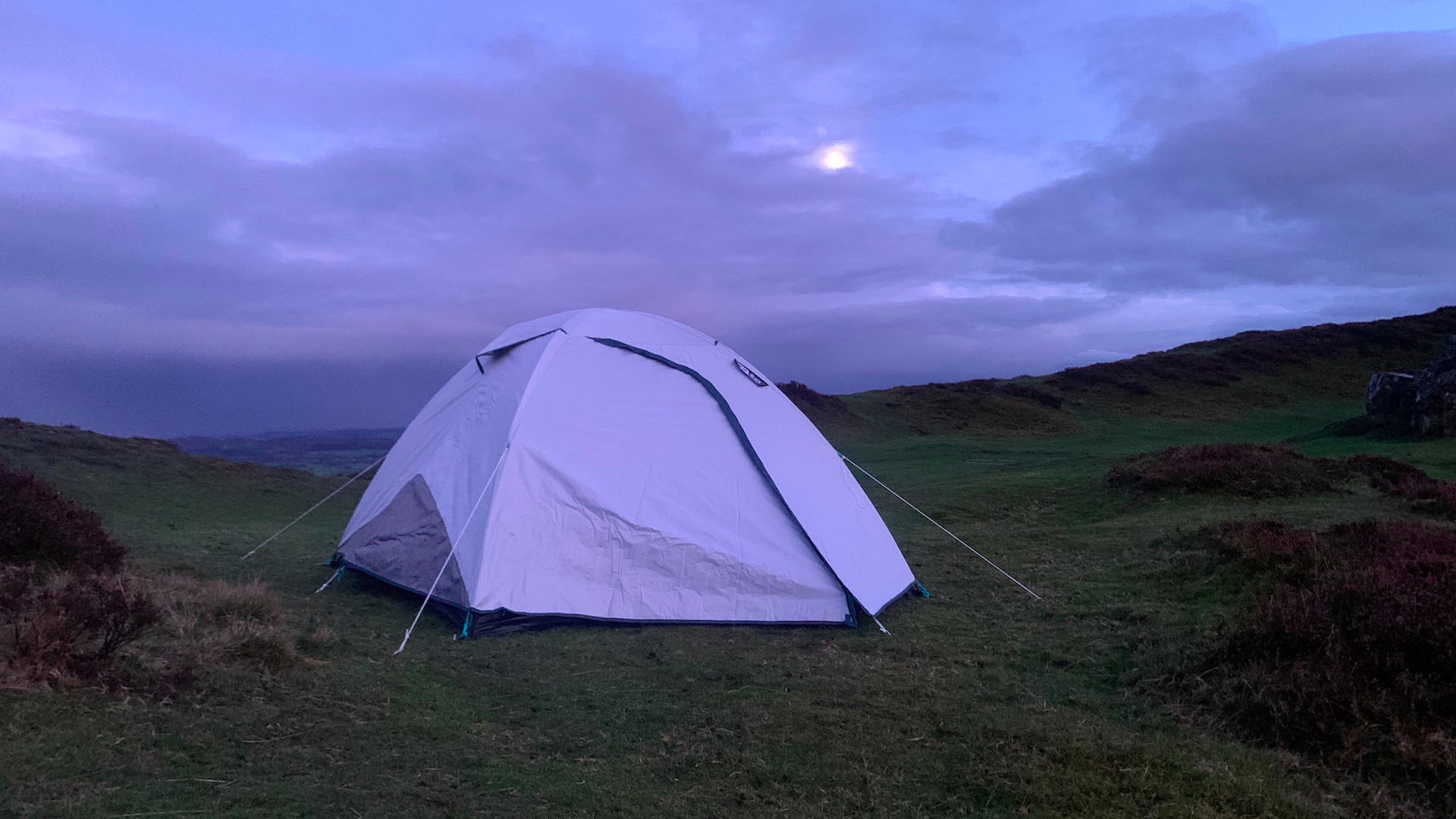
First of all, one of the major selling points of this tent (and the entire Fresh&Black range) is the extra thick fly that blocks out all sunlight. Allegedly, this keeps the inside of the tent at a comfortable temperature during the hottest summer days. Truthfully, though, I don’t understand the utility of this: If it’s uncomfortably hot outside, the inside of the tent is still going to be too warm to while away the hottest parts of the day in.
It’s a feature that I don’t think many will ever be able to make much use of, and the result is an extra thick fly that adds weight and bulk to the tent when packed down and allows for practically no ventilation. Crucially, as the Fresh&Black fly blocks out any and all sunlight, it also means that the inside of the tent is uncomfortably dark, even at the height of the day. Zip up the door on the vestibule and you’ll quickly need to fire up your best headlamp, especially when the weather is overcast. To me, this was a classic case of solving a problem that doesn’t exist…
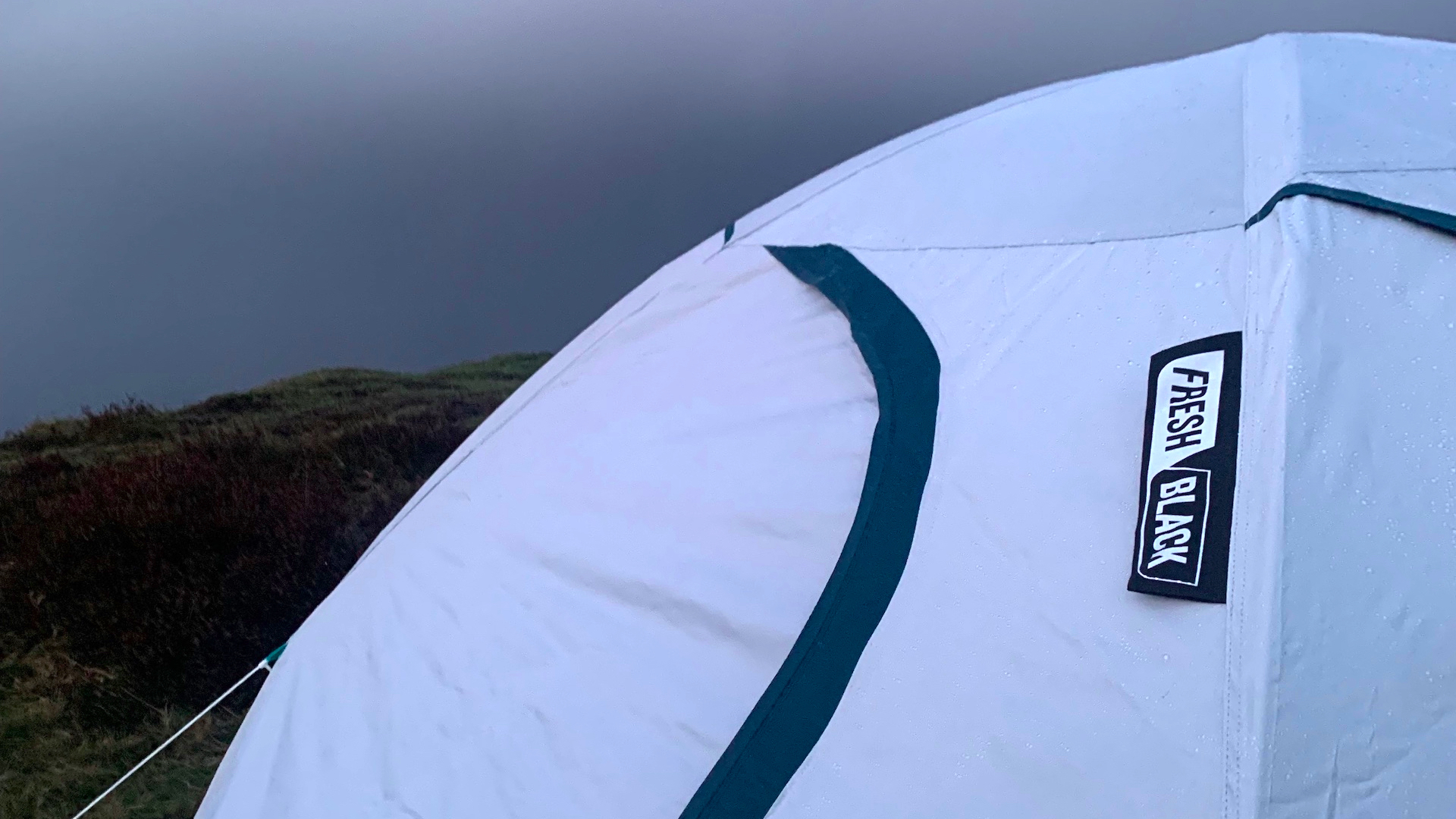
Additionally, the tent itself is also not very suitable for camping in inclement weather. Because of the inner-first pitching style, if you put this thing up in a storm, the inside will likely flood-out before you’re able to get the waterproof fly over it. This happened to me on a recent trip, in fact.
What’s more, the door of the vestibule opens up over the interior, which means that falling rain has direct access to the inside of the tent when its open. For that reason – as was my experience – when the heavens open and you have to seal up the doors, you end up sitting in near darkness on a floor that is still damp from when you pitched up.
Finally, the size of the vestibule can also be a problem. It’s too small to store any real items of gear (outside of, maybe, a pair of hiking boots), so you’ll need to bring your backpack and other bits of kit into the tent with you. Luckily, there’s plenty of room for two people and two lots of gear, but you may not want this in with you when it’s wet.
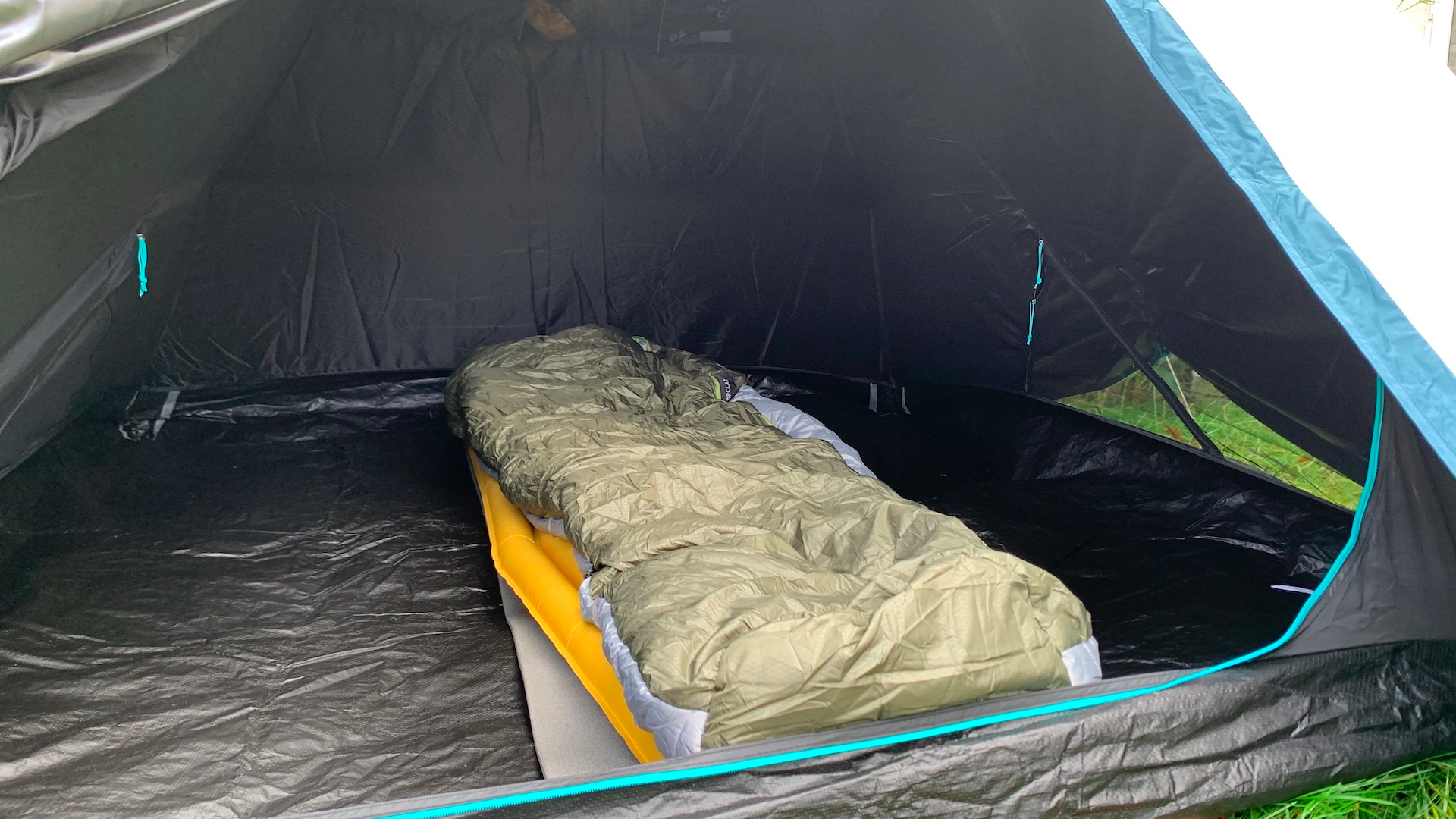
To the Quechua MH100’s credit, however, the tent itself is incredibly easy to erect. I got this thing up in less than 10 minutes on my first try, and I’m able to pack it away in less than five. Interestingly, the sides of the tent also come with some additional venting options in the form of drawstrings that raise (or lower) the sides of the tent. A novel feature that works to combat the complete lack of ventilation afforded by the extra thick fly sheet is that the sides come with two windows that can be open and closed from within the tent. These offer quick access to the outside and give you added (albeit very restricted) storing space between the fly and the inner.
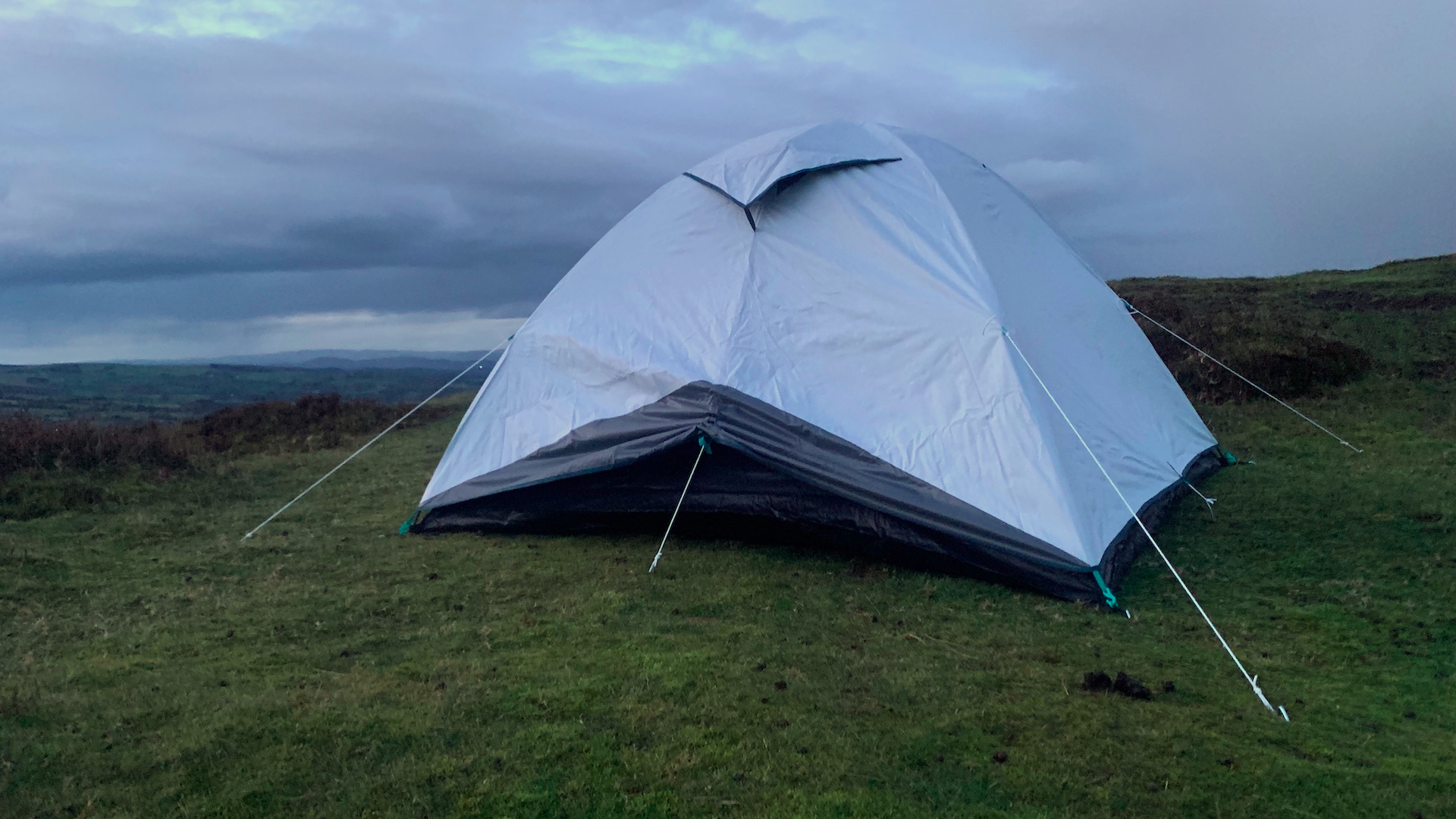
Durability
Thanks to the Fresh&Black fly being extra thick, this thing is seriously durable. At this price point, I feel like you’ll be hard pressed to find a tent that can withstand more abuse. For that reason, I’ve always been happy to carry this strapped to the outside of my pack, something I tend to be a little more cautious about when carrying flimsier-feeling shelters, such as the Big Agnes Fly Creek or other lightweight models. The stitching and the thickness of the bathtub floor are also very impressive: no footprint is needed when pitching the Quechua MH100, and I’m confident that the solid build quality (considering the price) will let you throw many years of abuse at it before something snaps.
Decathlon claim that the tent can withstand winds of up to 40 km/h. I’ve personally had it out in gusts of up to around 30 km/h and it did okay, though I wouldn’t want to use it in anything more aggressive.
Limitations
Being 4 kg, the Quechua MH100 Fresh&Black isn’t very suitable for long distance hiking – especially if you’re going to be carrying all of it on your own. Because of its larger pack size and its clear performance problems in poor weather, it’s also not the most suitable option for dispersed camping trips. If you plan to stick to campsites, however, this tent will deliver exceptional performance for a very reasonable price, and I’m excited to test out its heat-repelling properties on some trips in the summer months.
Growing up just south of the glorious Brecon Beacons National Park, Craig spent his childhood walking uphill. As he got older, the hills got bigger, and his passion for spending quality time in the great outdoors only grew - falling in love with wild camping, long-distance hiking, bikepacking and fastpacking. Having recently returned to the UK after almost a decade in Germany, he now focuses on regular micro-adventures in nearby Snowdonia and the Brecon Beacons, as well as frequent trips to the Alps and beyond. You can follow his adventures over on komoot.

